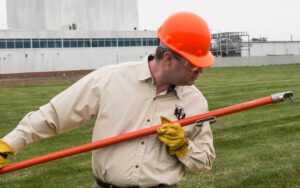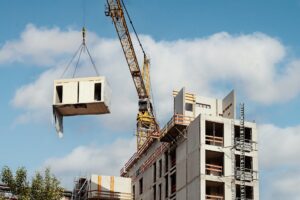Maintaining clean pipelines is crucial for the smooth operation of various industries, including oil and gas, water supply, and sewage systems. Over time, pipelines can accumulate debris, scale, and other contaminants, leading to reduced efficiency and potential safety hazards. Hiring a professional pipeline cleaning services contractor is essential to ensure thorough cleaning and maintenance. In this comprehensive guide, we’ll walk you through the steps of finding, vetting, and hiring the right pipeline cleaning services contractor for your needs.
Assess Your Need
Before you begin your search for a pipeline cleaning services contractor, assess your specific requirements. Consider factors such as the type of pipeline (e.g., oil, gas, water), its size, location, and the extent of cleaning needed. This initial evaluation will help you narrow down your options and communicate effectively with potential contractors.
Research Potential Contractors
Start your search by compiling a list of potential pipeline cleaning services contractors. You can use online directories, industry associations, recommendations from colleagues, or search engines to find companies operating in your area. Pay attention to their experience, expertise, and reputation in the field.
Check Credentials and Certifications
Once you have a list of potential contractors, verify their credentials and certifications. Look for certifications such as ISO 9001 for quality management and OHSAS 18001 for occupational health and safety. Additionally, check if they comply with industry standards and regulations set by relevant authorities.
Evaluate Experience and Track Record
Experience matters when it comes to pipeline cleaning services. Evaluate each contractor’s track record by reviewing their past projects, client testimonials, and case studies. Look for evidence of successful pipeline cleaning operations, particularly in industries similar to yours.
Assess Equipment and Technology
The effectiveness of pipeline cleaning largely depends on the equipment and technology used by the contractor. Inquire about the types of cleaning tools, methods, and technologies they employ. Ideally, the contractor should use advanced equipment capable of removing various types of contaminants while minimizing disruption to pipeline operations.
Consider Safety Protocols
Safety should be a top priority when hiring a pipeline cleaning services contractor. Inquire about their safety protocols, training programs for employees, and compliance with industry safety standards. A reputable contractor will prioritize safety at every stage of the cleaning process to prevent accidents and minimize risks.
Request Detailed Proposals
Once you’ve shortlisted a few contractors, request detailed proposals outlining the scope of work, timeline, pricing, and terms of service. Compare the proposals carefully, taking into account factors such as cost-effectiveness, quality of services offered, and flexibility in accommodating your specific needs.
Ask About Environmental Practices
Environmental sustainability is becoming increasingly important in pipeline cleaning operations. Inquire about the contractor’s environmental practices, such as waste disposal methods, use of eco-friendly cleaning agents, and adherence to environmental regulations. Choose a contractor committed to minimizing environmental impact while delivering effective cleaning solutions.
Seek References and Reviews
Before making a final decision, seek references from past clients and read online reviews of the contractor’s services. This will provide valuable insights into their reputation, reliability, and customer satisfaction levels. Don’t hesitate to reach out to references directly to ask about their experience working with the contractor.
Negotiate Contract Terms
Once you’ve selected a contractor, negotiate contract terms that clearly outline the scope of work, responsibilities of both parties, payment schedule, and any warranties or guarantees provided. Ensure that all terms are clearly defined and agreed upon before signing the contract.
Conclusion
Hiring a pipeline cleaning services contractor requires careful consideration and thorough research to ensure that you choose the right partner for your needs. By following the steps outlined in this guide, you can confidently navigate the hiring process and select a contractor who is experienced, reliable, and committed to delivering high-quality cleaning services. Remember to prioritize factors such as experience, credentials, safety practices, and environmental sustainability when making your decision. With the right contractor on board, you can maintain clean and efficient pipelines that support the smooth operation of your business or infrastructure.











